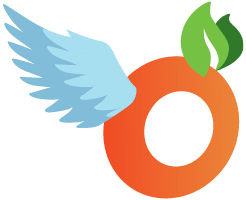Your website is more than a digital storefront – it’s your best salesperson, working 24/7 to engage and convert customers. However, writing website copy that turns casual browsers into loyal customers is both an art and a science. It requires you to understand your audience, align with your brand’s voice and focus on creating content that’s customer-centric. Here’s how you can craft conversion-focused web copy that engages, persuades and drives action
1. Know your audience inside and out
Before you put pen to paper (or fingers to keyboard), it’s essential to have a deep understanding of your target audience. Who are they? What are their pain points? What motivates them? The more you know about your audience, the better you can tailor your copy to resonate with them.
Pro tip: Create detailed buyer personas to guide your copywriting efforts. Include demographics, psychographics and behavioral patterns to paint a vivid picture of your ideal customer.
2. Craft a compelling value proposition
Your value proposition is the cornerstone of your website. It should clearly communicate what makes your product or service unique and why visitors should choose you over competitors. A strong value proposition addresses the following:
- What problem do you solve?
- How do you solve it better than others?
- What specific benefits can customers expect?
Pro tip: Remember, your value proposition should be prominently displayed on your homepage and reinforced throughout your website.
3. Speak your customers’ language
Effective website copy mirrors the language and tone your audience uses. Your brand’s voice is its personality in words. Whether you’re playful, professional or authoritative, it should be consistent across your website. This creates an instant connection and makes your brand more relatable. Avoid industry jargon unless you’re certain your audience uses and understands it.
Pro tip: Use tools like social media listening and customer surveys to gather insights into the exact words and phrases your audience uses when discussing your product or industry.
4. Focus on benefits, not just features
While it’s important to highlight your product’s features, what really drives conversions is communicating the benefits. Features tell your visitors what you’re offering, benefits tell them why it matters. How will your product or service improve your customer’s life? What problems will it solve? Frame your copy around the outcomes and positive changes customers can expect.
For example:
- Feature-focused copy: “Our app tracks your expenses.”
- Benefit-driven copy: “Easily track your expenses so you can save more and stress less.”
Your audience isn’t just buying a product or service; they’re investing in the outcome it delivers.
5. Use persuasive writing techniques
Great web copy persuades visitors to take the next step. Use strong, action-driven language that creates urgency and encourages conversions. Phrases like “Get started today” or “Claim your free trial” make it clear what action users should take next. Incorporate proven persuasive writing techniques to make your copy more compelling:
- Social proof: Include testimonials, case studies and user statistics to build trust
- Scarcity: Highlight limited-time offers or exclusive deals to create urgency
- Storytelling: Use narrative elements to engage emotions and illustrate your product’s impact
- Problem-agitation-solution: Present a problem, agitate it, then offer your product as the solution
6. Optimize for SEO
While it’s crucial to optimize your copy for search engines, never do so at the expense of readability and user experience. Incorporate relevant keywords naturally throughout your copy, focusing on:
- Page titles and headers
- Meta descriptions
- First paragraph of content
- Image alt text
Pro tip: Remember, Google’s algorithms are increasingly sophisticated, rewarding high-quality, relevant content over keyword-stuffed pages.
7. Use clear, actionable calls to action (CTAs)
Whether your goal is to get visitors to “Subscribe,” “Buy Now” or “Learn More,” your CTA needs to stand out and be crystal-clear. Make them clear, action-oriented and value-focused. Some tips for effective CTAs:
- Use action verbs: “Get,” “Start,” “Discover,” “Learn”
- Create a sense of urgency: “Limited time offer,” “Only 3 spots left”
- Highlight the value: “Start your free trial,” “Get instant access”
Place CTAs strategically where users are most likely to convert, such as at the top of your page, after engaging sections and at the end.
8. Keep your copy simple and scannable
People skim websites rather than reading word-for-word. Make your copy easy to digest by:
- Using short paragraphs and sentences
- Incorporating bullet points and numbered lists
- Utilizing subheadings to break up content
- Bolding key points for emphasis
This makes your content digestible and ensures visitors grasp the key information at a glance.
9. Align copy with your brand voice
Consistency is key in building brand recognition and trust. Ensure your website copy aligns with your overall brand voice across all touchpoints. Whether your brand is formal, casual, humorous, or technical, maintain that tone throughout your site.
For instance, if your brand is fun-loving, write copy with humor or casual tones, like, “Get your dream skin without breaking the bank. Yes, we’ve got you covered!” If you’re in a luxury market, the tone might shift to something more refined, such as, “Indulge in elegance with our premium skincare solutions.”
Pro tip: Use style guides and voice templates to ensure everyone drafting content stays within your brand’s tonal parameters.
10. Test and refine
The first draft of your site is rarely the last. Writing website copy that converts is an iterative process. Use A/B testing to experiment with different headlines, CTAs or value propositions to pinpoint what resonates with your audience. Platforms like Google Analytics or Hotjar can show you what’s working and where visitors might drop off. Analyze your website metrics to identify areas for improvement and continuously refine your approach.
Effective website copy bridges the gap between curiosity and conversion. It combines insights into your audience’s needs with clear, engaging and benefit-driven language. By refining your approach over time, you’ll stay agile in meeting your customers where they are and turning visits into meaningful action.

Flying Orange has been a trusted development resource since 2007, meaning we’ve seen our fair share of design trends. Feel free to reach out for a free quote. We’re here to help with both ongoing, monthly website maintenance, or full website redesigns. We would love to learn more about your needs.


